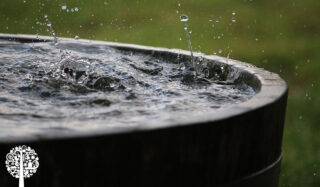Watering Woes: One Gardener’s Quest For A Clean Drink
Between lethal microbials and microplastics, our drinking water is a cacophony of fluctuating unknowns. I can’t be the only water sommelier who thinks most of our H20 tastes like hot garbage. Sometimes I feel like I am being offered the drain pipe at a waterpark that hosted an IBS convention that day. Imagine what our plants are thinking. For the sake of this article, let’s agree that plants are sentient beings worthy of clean and balanced water to grow properly.

It’s a known fact that we turn our water brown and send it off to the purification plant to get treated with chlorine, fluoride, and whatever approved scientific experiment they are trying to negate our eventual demise. If you pour this into the root system of a sensitive plant accustomed to pH-perfect fluids, you are flirting with plant murder.
Collecting Rainwater
Some municipalities don’t allow rainwater collection, but you should make it a habit. Set up a reservoir or some buckets under your gutters and let Mother Nature provide you with the world’s oldest elixir free of charge so you can give your plants a chlorine-free drink in the dog days of summer. Rainwater with perfect pH is becoming a commodity. I feel like Mad Max with a spade protecting my heirloom tomato seeds from the evil garden overlords.

Whisky And Water
Apologies to my editor; the whiskey is swinging from the chandeliers this evening, accenting some thoughts over the left-field wall. Whiskey, much like water, must taste right. It can’t be pumped full of poison and molested by foreign agents like during prohibition. Your city has spruced up the water flowing through your pipes and sewers, making fluoride and odd fecal matter the norm. You would be surprised how many drugs get flushed down the toilet. Your plants can not only tell the difference between rainwater and tap water; they may even reject your slum water altogether and stop any uptake of nutrients.
It’s the same with us at a restaurant; if the water tastes suspect, it’s not going down the hatch, and it’s an indicator of what’s in store for the rest of my meal.
Natural Water Cycles
This is all thanks to our naturally occurring water cycle: Evaporation, Convection, Precipitation, and Collection. The key is catching the water before it enters the water table. Funny because whiskey is made in much the same way. The mash is heated, and the vapor is then collected to make something that feeds the soul and is free of impurities.
It sounds botanically militant to scrutinize the water I feed my plant babies, but we are all allowed our obsessive-compulsive crutches, and clean drinking water for my garden might be mine. This is meant to act as a supplement and a buffer to your watering regimen. Sadly, even the water out in the “country” doesn’t pass muster. We as a society need to do better.
Get Some Buckets

It takes little effort to shove a bucket somewhere outside before a rainstorm. I am often seen running around my property like some crazed bucket lady trying to catch as much sweet sky liquid as I can. If your plants look sick, it can be attributed to water issues. Just because you checked your pH yesterday doesn’t mean it hasn’t shifted overnight. Your tap water was getting the job done last week, but now the city chlorinated the supply, and the plants don’t appreciate it very much. Good thing you have a few buckets of rainwater on hand to give them the drink nature intended.
The whiskey is flowing, and by the looks of the clouds, so soon will the sky. So I’m off to stumble down my back steps to fetch some empty buckets. If you don’t hear from me in a week, call my editor and tell her I have fallen and can’t get up and to send an ambulance and some more whiskey.
Happy drinking…I mean growing.




